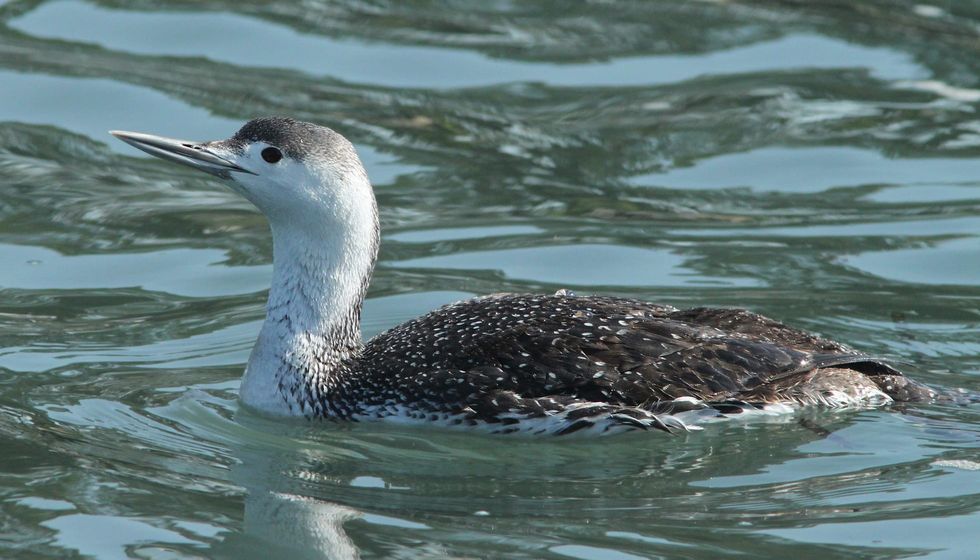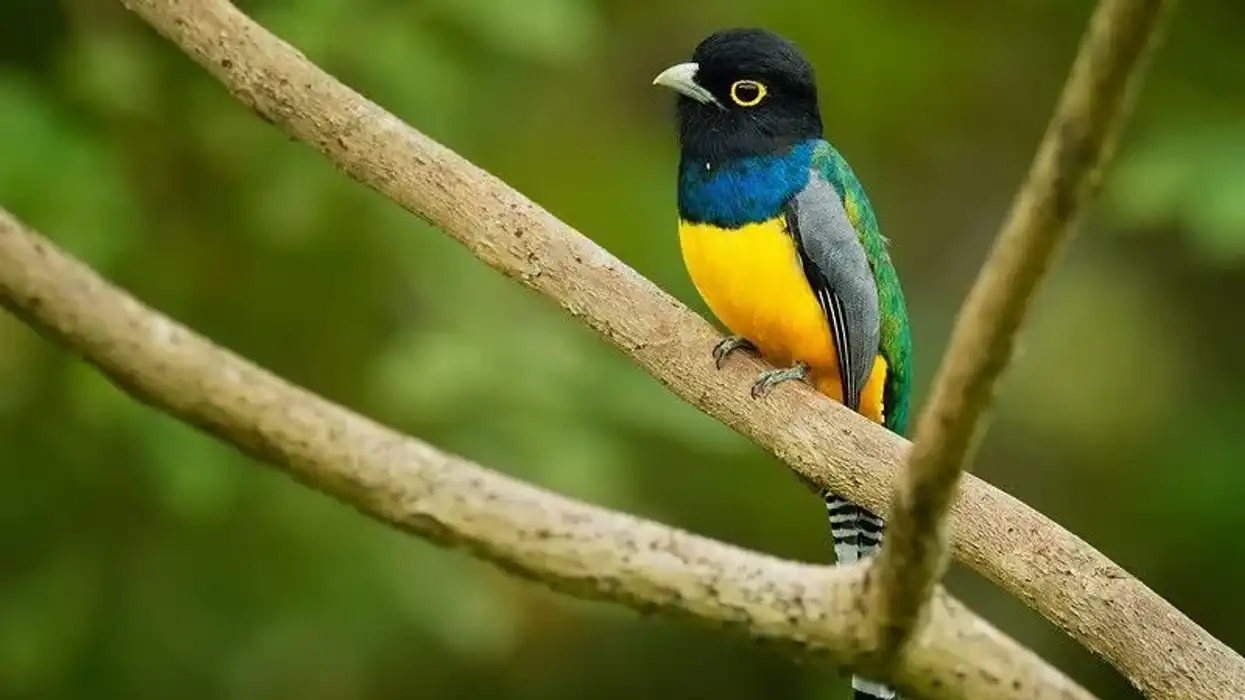Have you ever wondered what a red throated loon (Gavia stellata) is? Do you know this breeding bird belongs to the family Gaviidae? A red throated loon is a small aquatic bird that comes under migratory species.
It is one of the lightest birds among the loons. In the breeding season, these birds have their habitat in lakes, ponds, bogs, and wetlands. At the time of migration, loons reside along great lakes in flocks while during the winter, this loon species can be found along the Pacific Coast.
Do you wish to know why it is called a red throated loon (Gavia stellata)? Here are some interesting, engaging, and fun facts about this bird. Afterward, do check our other articles on the eared grebe and ring-necked duck as well.
Red Throated Loon Interesting Facts
What type of animal is a red throated loon?
The red throated loon (Gavia stellata) or red throated diver is a small aquatic bird that is a widely distributed member belonging to the Gaviidae family. The common loon is a migratory species whose scientific name is Gavia stellata.
It is one of the lightest birds among the loons. The red throated loon (gavia stellata) is usually seen in North America, Britain, Ireland, and the Arctic regions of northern Eurasia.
What class of animal does a red throated loon belong to?
As the red throated loon is a bird, it belongs to the Aves class under the Gaviidae family. Its scientific name is Gavia stellata. The common loon is found in North America and in the Arctic regions of northern Eurasia. Their breeding grounds are present along lakes, ponds, bogs, and wetlands in North America.
How many red throated loons are there in the world?
There are approximately 49,000-1,50,000 red throated loons according to Wetlands International in 2002. The red throated loon winters along the Pacific Coast.
Where does a red throated loon live?
A red throated loon is seen in large ponds as well as ocean bays. Loons mostly breed in Arctic regions. In winter, these North American birds are usually seen in the coastal parts of the northern hemisphere. Their breeding grounds can be found along lakes, ponds, bogs, and wetlands.
What is a red throated loon's habitat?
A red throated loon lives in lakes and ponds and during the winter loons are seen in the coastal waters of the northern hemisphere. It breeds mostly on freshwater. These North American birds are seen along large lakes, large ponds as well as ocean bays. It is found in North America and in the Arctic regions of northern Eurasia.
Who do red throated loons live with?
A red throated loon usually prefers to live in pairs. Both the male and female build the nest together and look after their young ones together. In winter, these black and white birds mix with other loon species.
How long does a red throated loon live?
A red throated loon has an average lifespan of 20-23 years. The lifespan of loons may vary according to their surroundings.
How do they reproduce?
A red throated loon is monogamous and usually breeds on freshwater lakes. The bond between pairs remains longer and continues throughout the winter.
The courtship display is observed in newly formed pairs too. Both the male and female together build the nest and the female lays two eggs which are incubated for 24-29 days by both of them.
Chicks are dark brown in color and spend most of their time swimming for two to three weeks. Within seven weeks, fledgling takes place and these breeding birds become sexually mature in three years.
What is their conservation status?
A red throated loon is under the Least Concern status in the IUCN Red List. Loons are not a globally threatening species but still, their number is decreasing slightly. It still has a large population and hence does not face any extinction.
Red Throated Loon Fun Facts
What do red throated loons look like?
A red throated loon is the smallest and lightest of the divers. It is a small aquatic bird that belongs to the Gaviidae family. During breeding plumage, the upper part is blackish-brown and the head and neck are in gray color.
It also has a red throat during that season. The tail is black. During the winter or non-breeding plumage, the upper part of the body is in brownish color with white spots.
The face and fore neck will be in pure white color. Male ones have heavier heads and bills and are slightly larger than females. These loons have three webbed toes.
How cute are they?
A red throated loon is one of the smallest and lightest aquatic birds. It is very cute in appearance with its red throat and webbed toes. It also has a different sound. Loons are really cute birds.
How do they communicate?
A red throated loon call comprises different vocalizations for different situations. Loons make a croaking bark when they sense predators and make a moaning call which is low pitched between the pairs and parents. Loons also have a short wailing sound.
How big is a red throated loon?
A red throated loon is a small-sized aquatic bird and has a length of 22-26 in (55.8-66.0 cm) and have a wingspan of 35.4-36.6 in (89.9-92.9 cm). Loons are almost 10 times bigger than a sparrow.
How fast can a red throated loon fly?
A red throated loon (order Gaviiformes) can fly very fast. This breeding species has an average flying speed of 48 mph (77.2 kph).
How much does a red throated loon weigh?
On an average scale, a red throated loon (order gaviiformes) weighs around 3.9 lb (1.76 kg). It may vary according to the surroundings.
What are the male and female names of the species?
As the red throated loon is a bird, its species is Gavia stellata. Both the male and female birds do not have any particular name and are hence known as males and females respectively.
What would you call a baby red throated loon?
A baby red throated loon is called a chick.
What do they eat?
Red throated loons usually eat small fishes, leeches, worms, squid, and other aquatic insects. Loons also have predators. Birds like crows, gulls, ravens, and mammals like raccoons, skunks are the main predators that eat eggs as well as chicks.
Are they dangerous?
Red throated loons are not dangerous and do not pose any threat to others unless it is harmed.
Would they make a good pet?
A red throated loon is not usually kept as a pet. But in some cultures, loons are eaten by humans.
Did you know...
A red throated loon performs a circle dance in order to evaluate the strength of its rivals. It slowly swims in circles and does not touch the other physically. It dives underwater and the rivals too slowly dive to track the movements.
Where do red throated loons sleep?
A red throated loon lives mostly in water rather than in lands. They normally sleep in the water and take short naps of around 15 minutes. They also sleep during the time of incubation as well.
How did the red throated loon get its name?
A red throated loon obtains a unique red throat during the breeding season. That is why it is called red throated. These loons are called loons because of how clumsy they are while walking on the land.
Here at Kidadl, we have carefully created lots of interesting family-friendly animal facts for everyone to discover! Learn more about some other birds from our weaver bird facts and limpkin facts pages.
You can even occupy yourself at home by coloring in one of our Red-Throated Loon coloring pages.









